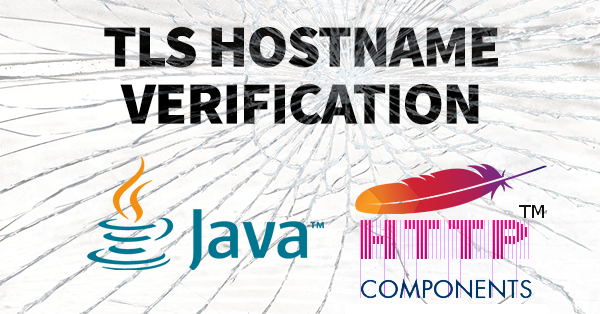
GoSecure Announces Managed Detection and Response Essentials
MDR solution to replace traditional AV with more effective endpoint security La Jolla, CA., — GoSecure, a leading provider of Managed Detection and...
GoSecure Titan® Managed Extended Detection & Response (MXDR)
GoSecure Titan® Managed Extended Detection & Response (MXDR) Foundation
GoSecure Titan® Vulnerability Management as a Service (VMaaS)
GoSecure Titan® Managed Security Information & Event Monitoring (Managed SIEM)
GoSecure Titan® Managed Perimeter Defense (MPD)
GoSecure Titan® Inbox Detection and Response (IDR)
GoSecure Titan® Secure Email Gateway (SEG)
GoSecure Titan® Threat Modeler
GoSecure Titan® Identity
GoSecure Professional Security Services
Incident Response Services
Security Maturity Assessment
Privacy Services
PCI DSS Services
Penetration Testing Services
Security Operations

GoSecure MXDR for Microsoft
Comprehensive visibility and response within your Microsoft security environment
USE CASES
Risk-Based Security Measures
Safeguard sensitive information
Make informed decisions
Fulfill regulatory obligations
A valuable risk management strategy
Combat ransomware with innovative security
Halt zero-day exploits with advanced protection
Get ahead and win the race with the GoSecure Titan® Platform
24/7 MXDR FOUNDATION
GoSecure Titan® Endpoint Detection and Response (EDR)
GoSecure Titan® Next Generation Antivirus (NGAV)
GoSecure Titan® Security Information & Event Monitoring (SIEM)
GoSecure Titan® Inbox Detection and Reponse (IDR)
GoSecure Titan® Intelligence

ABOUT GOSECURE
GoSecure is a recognized cybersecurity leader and innovator, pioneering the integration of endpoint, network, and email threat detection into a single Managed Extended Detection and Response (MXDR) service. For over 20 years, GoSecure has been helping customers better understand their security gaps and improve their organizational risk and security maturity through MXDR and Professional Services solutions delivered by one of the most trusted and skilled teams in the industry.
LATEST PRESS RELEASE
MDR solution to replace traditional AV with more effective endpoint security La Jolla, CA., — GoSecure, a leading provider of Managed Detection and...
GOSECURE BLOG
A GoSecure Titan Lab investigation found that...
Phishing continues to be the number one threat...
Tax season is upon us, and with it comes the...
RESOURCES
SECURITY ADVISORIES
The page you requested could not be found. Try refining your search, or use the navigation above to locate the post.
 A few weeks ago, we released a blogpost about an authenticated RCE we found in Pulse Connect Secure (CVE-2020-8218). In that post, we mentioned that we discovered more vulnerabilities. Four vulnerabilities were discovered on Pulse Secure Connect, a VPN (Virtual Private Network) software, leading up to an unauthenticated user being able to perform remote code execution (RCE). While the RCE itself requires to be authenticated with admin privilege, two Cross-Site Scripting (XSS) attacks make it possible to force an admin to execute code on behalf of the attacker, effectively allowing remote code execution as an unauthenticated user. An XML External Entity (XXE) was also discovered for authenticated users, granting arbitrary file read on the remote filesystem.
A few weeks ago, we released a blogpost about an authenticated RCE we found in Pulse Connect Secure (CVE-2020-8218). In that post, we mentioned that we discovered more vulnerabilities. Four vulnerabilities were discovered on Pulse Secure Connect, a VPN (Virtual Private Network) software, leading up to an unauthenticated user being able to perform remote code execution (RCE). While the RCE itself requires to be authenticated with admin privilege, two Cross-Site Scripting (XSS) attacks make it possible to force an admin to execute code on behalf of the attacker, effectively allowing remote code execution as an unauthenticated user. An XML External Entity (XXE) was also discovered for authenticated users, granting arbitrary file read on the remote filesystem.
Adversary versus target; all organizations participate in this daily cat-and-mouse. Organizations initially fought this battle on the technology front. Miss something? Find another new technology to address the gap. Over time, technology delivered interesting intel, but malicious activity still slipped through. Organizations then went on the hunt to find the “right” person with the “right” skill. And this cycle continues unabated – tech, people, tech, people, tech, people, etc.
Are things better? Undeniably. Can they be better still? Without question. But as long as the tech/people cycle continues, most organizations will never reach their cybersecurity goals because the goal will always be just out of reach by one person or one technology. To illustrate this, we’ll use the recent Exorcist 2.0 ransomware.
 Unicode-related vulnerabilities have seen an increase in momentum in the past year. Last year, a Black Hat presentation by Jonathan Birch detailed how character normalization NFC/NFKC can lead to glitches in URL and host manipulation. Recently, two vulnerabilities were found in password reset functionality. The two affected applications were Django and Github. In the previous blog post, we have presented API transforming code points with potential side effects. In this post, we present one of our findings: a vulnerability affecting Oracle JDK and Open JDK host verification in the TLS communication. We are also including details from a similar weakness in Apache HTTP client.
Unicode-related vulnerabilities have seen an increase in momentum in the past year. Last year, a Black Hat presentation by Jonathan Birch detailed how character normalization NFC/NFKC can lead to glitches in URL and host manipulation. Recently, two vulnerabilities were found in password reset functionality. The two affected applications were Django and Github. In the previous blog post, we have presented API transforming code points with potential side effects. In this post, we present one of our findings: a vulnerability affecting Oracle JDK and Open JDK host verification in the TLS communication. We are also including details from a similar weakness in Apache HTTP client.
 In this post we outline the release of PyRDP version 1.0 and highlight the newly added features and improvements made to the tool since 0.4.1. PyRDP is a Remote Desktop Protocol (RDP) stateful proxy that can intercept and tamper with sessions for offensive security engagements and malware research.
In this post we outline the release of PyRDP version 1.0 and highlight the newly added features and improvements made to the tool since 0.4.1. PyRDP is a Remote Desktop Protocol (RDP) stateful proxy that can intercept and tamper with sessions for offensive security engagements and malware research.
 This is the second blog post in a series discussing attacks leveraging Windows Server Update Services (WSUS).
This is the second blog post in a series discussing attacks leveraging Windows Server Update Services (WSUS).
After having revived the classic 2015 WSUS attack in part 1 of the series by creating a tool, PyWSUS, that works on Windows 10, we started to wonder if the module could be used for other purposes.
We often see deployments using WSUS where users can set the local proxy for their session. If the WSUSpect-proxy module is nothing more than a MITM proxy that modifies some parts of the traffic and we also have the power to proxy our local traffic, we therefore have the power to run WSUSpect-proxy locally to run code as System on our asset.